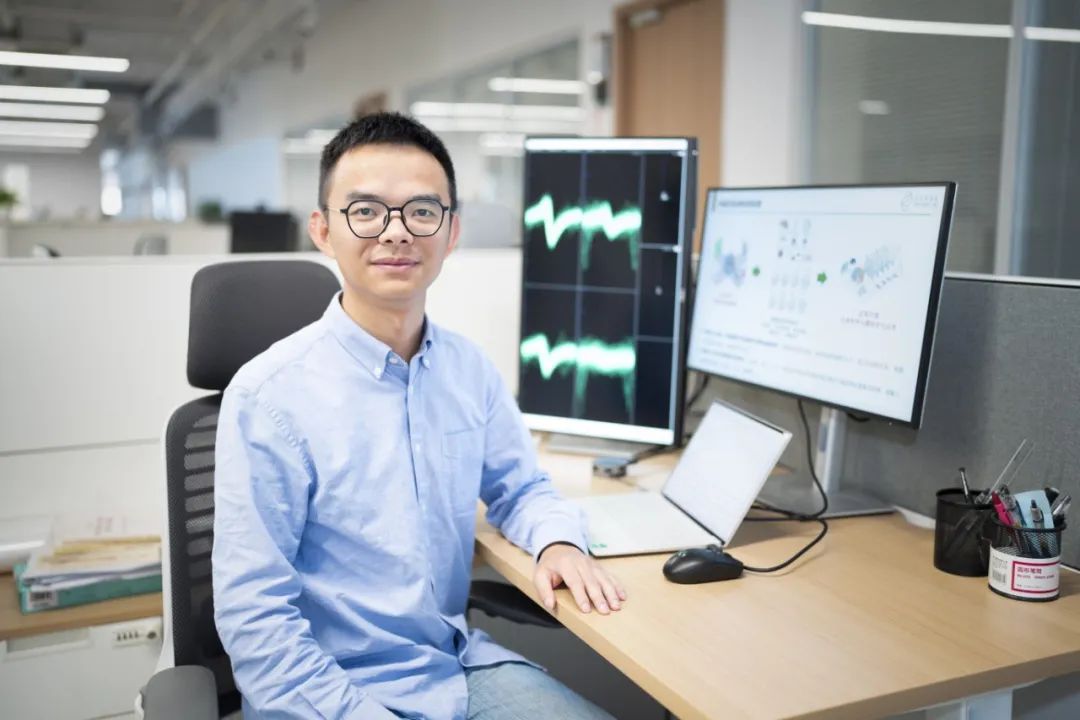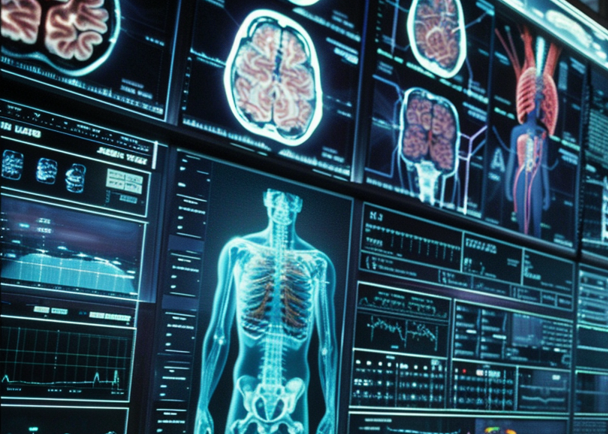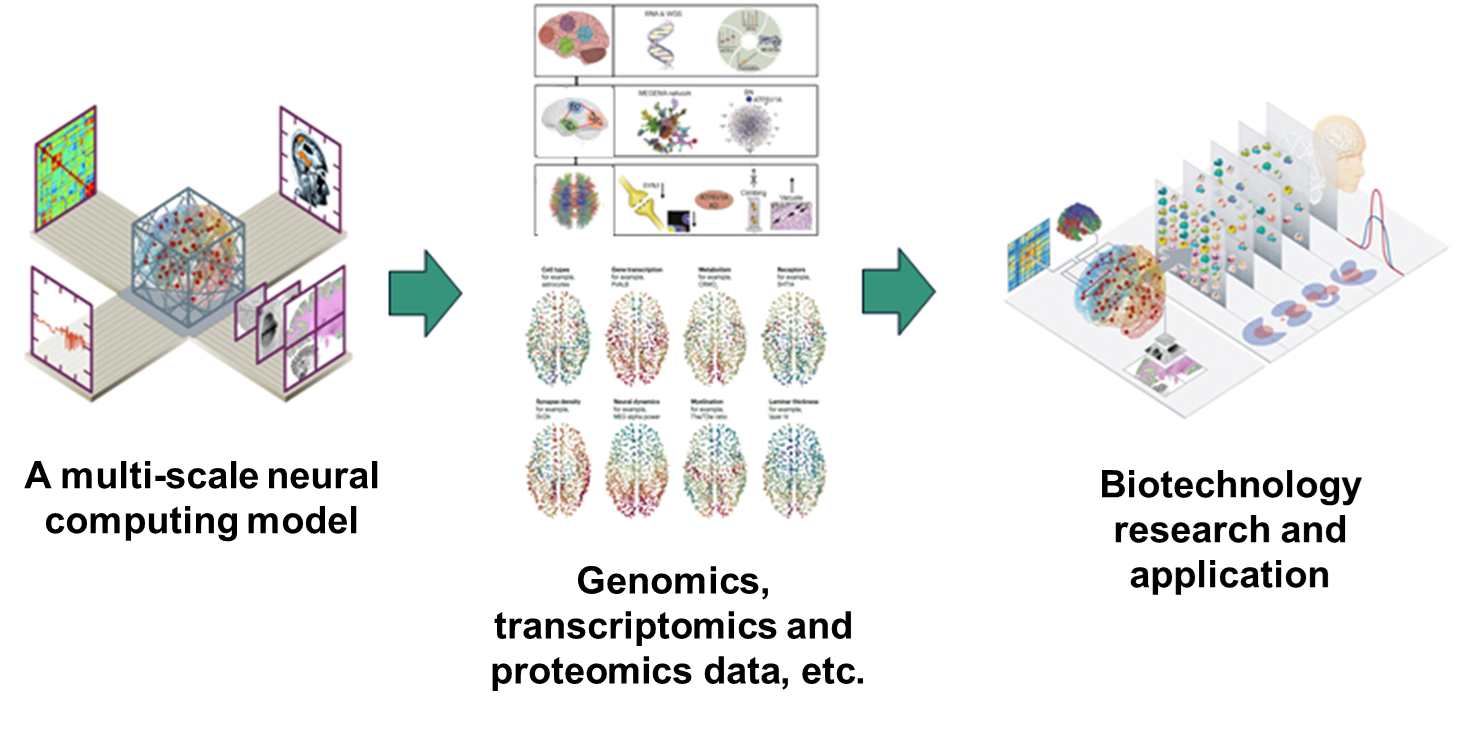

A human brain contains about 86 billion neurons, each with a subtle nature. The human body contains about 37 trillion cells, each with its own specialized role to ensure the proper functioning of the body. Man is the miracle of creation, but it is not easy to interpret the complex human body system.
From the perspective of WANG Zhaoxiang, a research expert at the Research Center for Life Sciences Computing of Zhejiang Lab (ZJ Lab), the human body is akin to a treasure trove waiting to be unlocked, housing the mysteries of disease and healing. Since joining ZJ Lab in 2022, WANG Zhaoxiang has carried out research on "digital twins of the human body" (DT) by means of "Computing + Data + Models", that is, to simulate a "twin brother" of humans in digital space, reconstruct disease occurrence, and discovering cures, thus accelerating traditional biotechnology research.

Some people say that DT is to reconstruct a digital mirror image of life. In general terms, DT is perceived as a "twin brother" of humans in digital space.
Unlike traditional cloning, DT is a digital mapping technology to build mock human organs and even brain functions based on data and algorithms. This "digital human" can also reconstruct the occurrence of particular diseases and simulate the therapeutic efficacy of drugs. As early as 2013, the European Union launched a large-scale research project called the "Human Brain Project". The 10-year project, involving nearly 500 scientists and a total budget of 607 million euros, aims to implement digital twins of human brains by building infrastructure for collaboration between computer technology and neuroscience, so as to unravel the mysteries of the deep integration of AI with biological intelligence.

AI-Generated Photo
As for traditional medical research, it is difficult to reconstruct disease occurrence and explore novel diagnostic and therapeutic techniques. At ZJ Lab, WANG Zhaoxiang and his team have leveraged foundation models and intelligent computing to boost deep integration of BT and IT, accelerating the research on DT. "My job is to integrate genomics, transcriptomics and proteomics data, as well as biological information such as metabolism and anatomy, into a BT foundation model, and sift key molecular and genetic information through the foundation model, so as to build a biologically constrained human body digital twin model. Bodily functions are modeled and regulated via a digital twin platform to explore disease mechanisms, develop new diagnostic and therapeutic techniques, and provide personalized treatment suggestions and prediction models for clinical practice," said WANG Zhaoxiang.
At present, WANG Zhaoxiang and his team have developed a multi-scale neural computing model, including fine structures such as axons, cell bodies and synapses of neurons, as well as computing models ranging from individual neurons to complex neural networks. The models can accurately simulate in-vivo electrical nerve stimulation experiments at different spatial and temporal scales, to provide technical support for delving into biophysical and neurodynamic mechanisms behind experimental phenomena and developing novel neuromodulation paradigms.

Having been involved in biomedical engineering research for 15 years, WANG Zhaoxiang has made great achievements in studies of the human body from micro regulation (the cell) to the macro scale (the human body). He has published more than 30 research papers on human body digital twin and neuromodulation in IEEE Transactions on Biomedical Engineering and other journals, and undertook "Research on New Deep Brain Stimulation Therapies for Epilepsy Based on Spatiotemporal Asynchronous Regulation", a project funded by the Young Scientists Fund of the National Natural Science Foundation of China. Looking back on his scientific career, WANG Zhaoxiang's original aspiration dates from a biographical film about scientists. When he was in primary school, WANG Zhaoxiang was drawn to the biopic of WANG Zhongcheng, a renowned neurosurgeon in China and an academician of the Chinese Academy of Engineering. The spirit of pursuing truth and pragmatism, fearlessness and selfless dedication exhibited by Academician WANG Zhongcheng struck deep into his boyhood mind. Therefore, when filling out the form of intention for the college entrance examination, WANG Zhaoxiang chose a path that not only allowed him to contribute to medical science, but also enabled him to leverage his strengths - biomedical engineering.
In the eyes of his colleagues, WANG Zhaoxiang is known for his professionalism, focus and insightful approach to scientific research. Outside of work, he is described as positive, cheerful, and actively involved in public benefit activities. He always holds a positive and optimistic attitude towards uncertainty in scientific research, and believes that "Those who choose to do research are doomed to embark on a lonely road. But the 'exploration and discovery' itself has given me great satisfaction. The exploration of the unknown, the pursuit of curiosity, and even the challenges posed by high-risk projects, all make me more passionate about scientific research."











